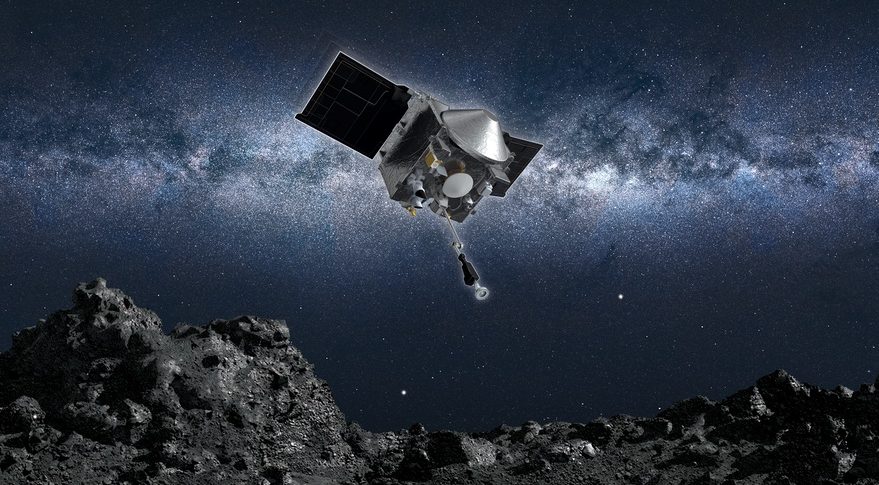Washington: After a four-year-long journey, NASA’s OSIRIS-Rex spacecraft successfully touched down Tuesday on the rugged surface of asteroid ‘Bennu’. The spacecraft then unfurled its robotic arm to collect a sample of rocks,the US space agency said. The Origins, Spectral Interpretation, Resource Identification, Security, Regolith Explorer (OSIRIS-REx) spacecraft briefly touched the near-Earth asteroid to collect dust and pebbles from its surface for delivery to Earth in 2023. Asteroid Bennu is currently more than 321 million kilometres from Earth.
It offers scientists a window into the early solar system as it was first taking shape billions of years ago and flinging ingredients that could have helped seed life on Earth, NASA said.
If Tuesday’s sample collection event, known as ‘Touch-And-Go’ (TAG), provided enough of a sample, mission teams will command the spacecraft to begin stowing the precious primordial cargo to begin its journey back to Earth in March 2021. Otherwise, they will prepare for another attempt in January, according to NASA.
“This amazing first for NASA demonstrates how an incredible team from across the country came together and persevered through incredible challenges to expand the boundaries of knowledge,” said NASA administrator Jim Bridenstine in a statement. “Our industry, academic, and international partners have made it possible to hold a piece of the most ancient solar system in our hands,” he added.
OSIRIS-REx fired its thrusters to nudge itself out of orbit around asteroid Bennu, extending the shoulder, then elbow, followed by the wrist of its 3.35-metre sampling arm, known as the Touch-And-Go Sample Acquisition Mechanism (TAGSAM). The spacecraft then transited across the asteroid while descending about 805 metres towards the surface.
After a four-hour descent, at an altitude of approximately 125 metres, the spacecraft executed the ‘Checkpoint’ burn, the first of two manoeuvres to allow it to precisely target the sample collection site, known as ‘Nightingale’.
Ten minutes later, the spacecraft fired its thrusters for the second ‘Matchpoint’ burn to slow its descent and match the asteroid’s rotation at the time of contact.
It then continued a treacherous, 11-minute coast past a boulder the size of a two-story building, nicknamed ‘Mount Doom’, to touch down in a clear spot in a crater on Bennu’s northern hemisphere.
The size of a small parking lot, the ‘Nightingale’ site is one of the few relatively clear spots on this unexpectedly boulder-covered space rock.
“This was an incredible feat. Today we have advanced both science and engineering and our prospects for future missions to study these mysterious ancient storytellers of the solar system,” said Thomas Zurbuchen, associate administrator for NASA’s Science Mission Directorate at the agency’s headquarters here.
“A piece of primordial rock that has witnessed our solar system’s entire history may now be ready to come home for generations of scientific discovery, and we can’t wait to see what comes next,” Zurbuchen added.
NASA said all spacecraft telemetry data indicates the TAG event executed as expected, adding, however, it will take about a week for the OSIRIS-REx team to confirm how much sample the spacecraft collected.
The spacecraft carried out TAG autonomously, with pre-programmed instructions from engineers on Earth.
“Today’s TAG maneuver was historic,” said Lori Glaze, Planetary Science Division director at NASA Headquarters. “The fact that we safely and successfully touched the surface of Bennu, in addition to all the other milestones this mission has already achieved, is a testament to the living spirit of exploration that continues to uncover the secrets of the solar system,” Glaze added.
